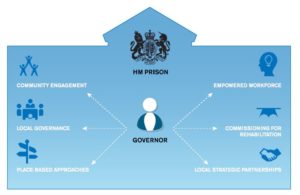Decency and the Mandela Rules
Managing risks and promoting rehabilitation are too often seen as alternatives in the current prison system.
That’s the conclusion of the first report from the RSA’s Future Prison project which sets out a blueprint for the modernisation of our prison system. The project is backed by a number of influential establishment figures (and includes a foreword by Michael Gove) which is why I’m writing a short series of posts exploring its key themes. This post examines Future Prison’s focus on “Risk and Rehabilitation.”
A focus on rehabilitation
The Future Prison report argues that rehabilitation can only take place in a “decent” prison with good physical conditions, positive relationships between staff and prisoners and access to activities which bring purpose and hope.
The report sets out its starting point the recently revised United Nations standard minimum rules for the treatment of those held in prisons known as the Nelson Mandela rules. These minimum standards are seen by most people involved in penal reform as even more critical today than five years ago with the Prison Inspectorate finding worsening physical conditions in many prisons and a substantial and worrying deterioration in prisoner and staff safety in almost every establishment.
Managing risk
The report highlights the fact that many public debates about the nature of prison interventions tend to polarise between a focus on meeting needs and reducing risk. It argues that a key part of safeguarding public safety and lowering people’s likelihood of reoffending is meeting their needs; effective rehabilitation reduces risk and creates safer communities.
The report argues that despite the security categorisation system, too many low risk prisoners are managed as if they were high risk with local, and sometimes, national guidance making it difficult for prisoners to access education, employment and other helping services for reasons which do not seem coherent to an outsider.
Those who work in prison will be familiar with the scenario where an apparently straightforward solution to a difficulty cannot be countenanced because once, a very long time ago, one prisoner did something unusual and potentially risky.

Conclusion
The report concludes its chapter on risk and rehabilitation by arguing that if prisons of the future are to put public safety, reducing risk and rehabilitation as their core purpose, we need a more sophisticated understanding of risk management which relies on a new culture, improved relationships and skills and a degree of discretion rather than unthinking reliance on Prison Service Instructions and a series of local strictures under the banner “we don’t do it like that here.”
This conclusion is aligned with the overall Future Prison project which prioritises the importance of setting governors incentives to achieve outcomes, liberating them from a tick-box culture and giving them a degree of autonomy to start transforming prisons.
Next week’s post explores the key theme (already prioritised by Justice Secretary Michael Gove): Leadership, autonomy and devolution.
[If you’re a woman looking for a top criminal justice job, see the Director of Operations for Women in Prison post on the jobs board.]








